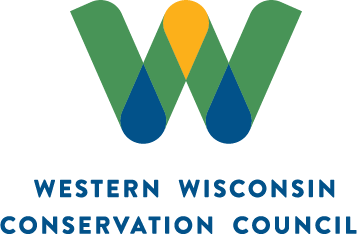FOR IMMEDIATE RELEASE
July 2, 2019
Contact: Jamie Mara
(920) 209-3990 | jmara@dairyforward.com
Western Wisconsin farmer-led group tackles soil health, water quality at field day
CLEAR LAKE, Wis. — A rainy day did not deter more than 70 farmers, agribusiness professionals and community members from coming together during spring planting to learn about conservation farming practices and a farmer-led initiative in western Wisconsin.
The Western Wisconsin Conservation Council (WWCC) hosted a field day June 11 at Friendshuh Farm.
A central theme was demonstrating how in-field conservation practices like no-till and planting cover crops can help improve soil structure, water holding capacity and overall soil health in ways that make farms more resilient to extreme weather. Field day host and dairy farmer Greg Friendshuh attributed his ability to get into the field to plant sooner this year to improved soil structure as a result of several years of no-till.
Participants in the event rotated through four stations. At one, Todd Doornink, a dairy farmer from Baldwin who is WWCC board president, and board secretary Chris Van Someren gave an overview of the group’s programs, goals and membership opportunities. Students from the University of Wisconsin-River Falls also talked about research they have been conducting on ground water nitrate levels in conjunction with farmer members of WWCC.
“Our goals include creating a forum to gather and learn from each other based on sound science,” Doornink said of his organization, which was formed in 2018.
A soil pit served as another station, where attendees heard about the impact of cover crops and no-till on soil structure. The explanations came from Keith Zygowicz and Luke Breitenbach of the U.S. Department of Agriculture’s Natural Resources Conservation Service and local farmer Pete Arcand. The observers were able to walk down into the soil pit and examine the soil layers, root structures and earthworm burrows. NRCS staff also demonstrated the difference in soil structure and aggregation between conventional and no-till by using soil samples from two different fields. Arcand provided a farmer’s perspective and spoke about why he made the transition to no-till.
Water infiltration and cover crop comparisons were discussed at a third station by farmers Jerry Emmert and Andy Bensend and NRCS staff member Jason Barrick. Using an infiltration ring, a tool to measure how fast water is absorbed by soil, Barrick demonstrated that the field where cover crops had been used was able to infiltrate more water and at a faster rate than the field without a cover crop. This means, when it rains, more water is getting into the soil where plants can use it rather than running off the surface. This is an important benefit to the crop and for water quality.
The remaining station focused on manure injection in a conservation farming system. Ernie Sundstrom of Sundstrom Pit Pumping and WWCC board member and farmer Tom Zwald led the discussion. Attendees had the opportunity to view a manure injection toolbar on display and ask questions about logistics.
“The field days show our members and others new techniques they can try and the willingness of farmers to improve,” Doornink said.
Photos:
Field day host and dairy farmer Greg Friendshuh talks to a news reporter about the importance of getting farmers and others into the field to learn about innovative conservation practices.
NRCS staff member Jason Barrick uses an infiltration ring to demonstrate how quickly water is absorbed by the soil where a cover crop is used.
Keith Zygowicz of the NRCS explains the benefits to soil health from cover crops and no-till.
About WWCC:
Western Wisconsin Conservation Council, founded in early 2018, is a farmer-led non-profit group of farmers dedicated to promoting water conservation, environmentally sound agricultural practices and community engagement. The group is composed of grain, dairy and livestock member farms in the Kinnickinnic, Rush and Willow River watersheds. Learn more at www.westernconservation.org.
